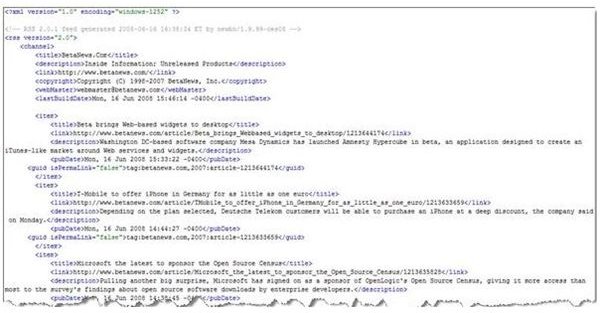History of RSS Feeds & Who Invented the 0.9, 1.0, and 2.0 RSS Versions
The Beginning of RSS
RSS is really over 10 years old. It passed through a few incarnations prior to becoming RSS. Apple proposed a Meta Content Framework (MCF) followed shortly by Microsoft’s Channel Definition Format (CDF). The Resource Description Framework (RDF) was created as a markup language describing metadata of a resource, such as a news article. Dave Winer at Userland created a format. Early versions of RSS used RDF in the header so back then, RSS was RDF Site Summary. It was a lightweight and extensible syndication format.
History of RSS 0.90, 1.0, and 2.0
In the Spring of 1999, Netscape released RSS 0.90 which used RDF and XML. Netscape later published RSS 0.91 with some changes. RSS is understood as Rich Site Summary, as RDF has been stripped. Netscape did not continue RSS development from this point. The void created a development fork as different groups moved forward with RSS 1.0 which was not compatible with RSS 0.9x. Other groups were developing RSS 0.92 and 0.93, the latter of which was never released. Further to that, an RSS 2.0 was published returning to RSS 0.9x compatibility, lacking in RSS 1.0, and with more features. It remains a specially formatted XML file [See image on the right].
With this confusion, it was clear that RSS needed a neutral, internet standard for confident adoption and a unified developer community. The Atom Syndication Format was established as an independent internet standard to replace the RSS mess and unite the adopters and users. It actually did not accomplish this goal, but rather created more contention amongst the different players. Atom is described in RFC4287.
Early developers were hoping for a true push solution, but RSS requires that the client poll the service requesting new content. Polling intervals are generally configured at the client. These days, RSS is thought of as Really Simple Syndication and has become a significant part of information distribution. People monitor changes at websites or collect news and information from the web by subscribing to an RSS feed. These feeds are consumed with an RSS Aggregator or Reader which may be a standalone application, part of another communication tool, such as e-mail client, or a web application that serves as a portal to render feeds. It is much more efficient that visiting each resource in search of updates.
The history of RSS has not been smooth. One of the resources I used for this article is Dave Winer’s own RSS timeline. For more information, read about “What is an RSS Feed”.
This post is part of the series: A Brief History
The Brief History series of articles summarizes products and applications in the messaging and collaboration realm.
